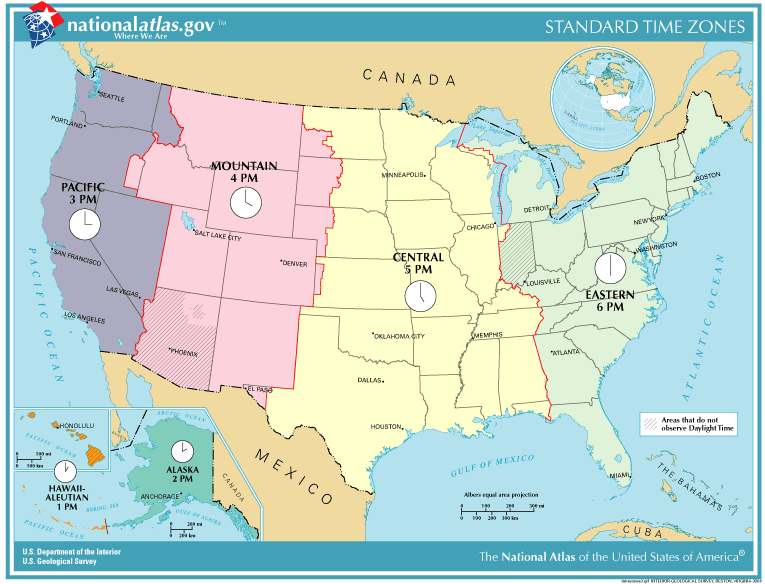Eastern Standard Time (EST) or UTC/GMT -5

Time Zones in the United States.
The Eastern Time Zone is also known as Eastern Standard Time (EST) falls mostly along the east coast of North America. Its time offset is −5 hours (UTC/GMT -5) during standard time and −4 hours (UTC/GMT -4) during daylight saving time. The time in this zone is based on the mean solar time of the 75th meridian west of the Greenwich Observatory.
Eastern Time (ET)
In the United States and Canada, this time zone is generally called Eastern Time (ET). Specifically, it is Eastern Standard Time (EST) when standard time is observed (winter), and Eastern Daylight Time (EDT) when daylight saving time is observed (spring, summer and autumn).
Effective since 2007, the local time changes from EST to EDT at 02:00 LST to 03:00 LDT on the second Sunday in March, and returns at 02:00 LDT to 01:00 LST on the first Sunday in November, in the U.S.A. as well as in Canada.
Daylight Saving Time Information
Beginning and end dates of the daylight saving time in the United States and in Canada.
| Year | Begins | Ends |
| 2020 | ||
| 2021 | ||
| 2022 | ||
| 2023 | ||
| 2024 | ||
| 2025 | ||
| 2026 | ||
| 2027 | ||
| 2028 | ||
| 2029 |
Daylight saving time start and and dates in Canada and in the USA.
North American Time Zones
The time zones in North America, in the west from Hawaii and Alaska to the east cost of USA and Canada and all the way to Nova Scotia and Newfoundland.
| Hours from UTC/GMT | Standard Time | Daylight Saving Time |
| -10 | Hawaii-Aleutian | |
| -9 | Alaska | Hawaii-Aleutian |
| -8 | Pacific | Alaska |
| -7 | Mountain | Pacific |
| -6 | Central | Mountain |
| -5 | Eastern | Central |
| -4 | Atlantic | Eastern |
| -3:30 | Newfoundland | |
| -3 | Atlantic | |
| -2:30 | Newfoundland |
Time zones in North America.
GMT and UTC
Greenwich Mean Time (GMT) is originally referring to mean solar time at the Royal Observatory in Greenwich, London. GMT and Coordinated Universal Time (UTC) can be seen equivalent when fractions of a second are not important.
